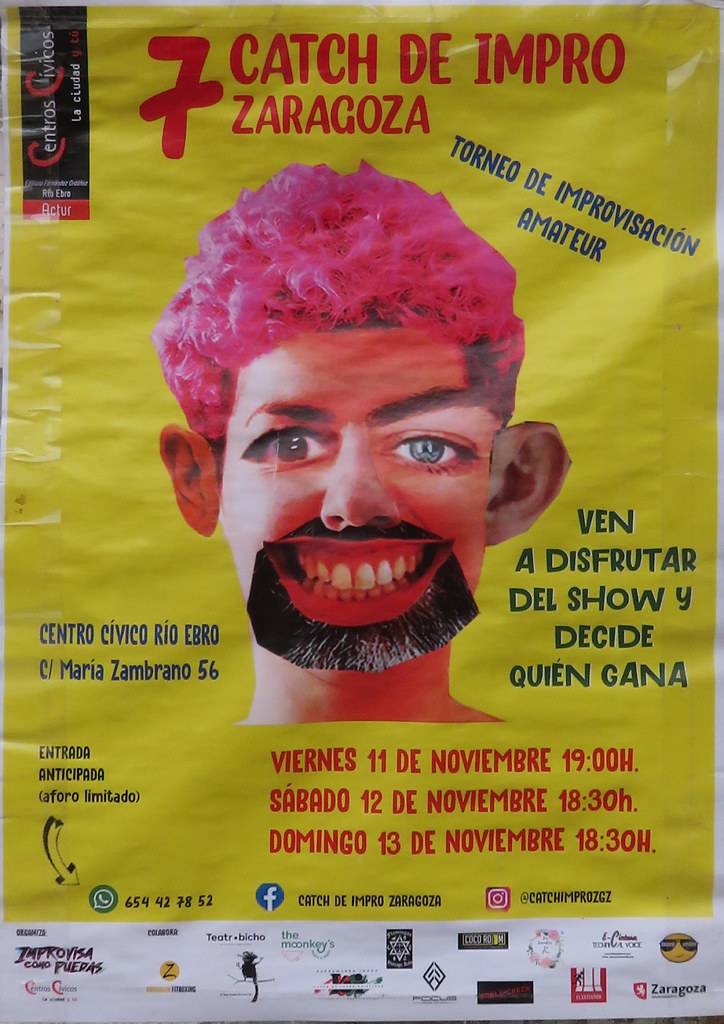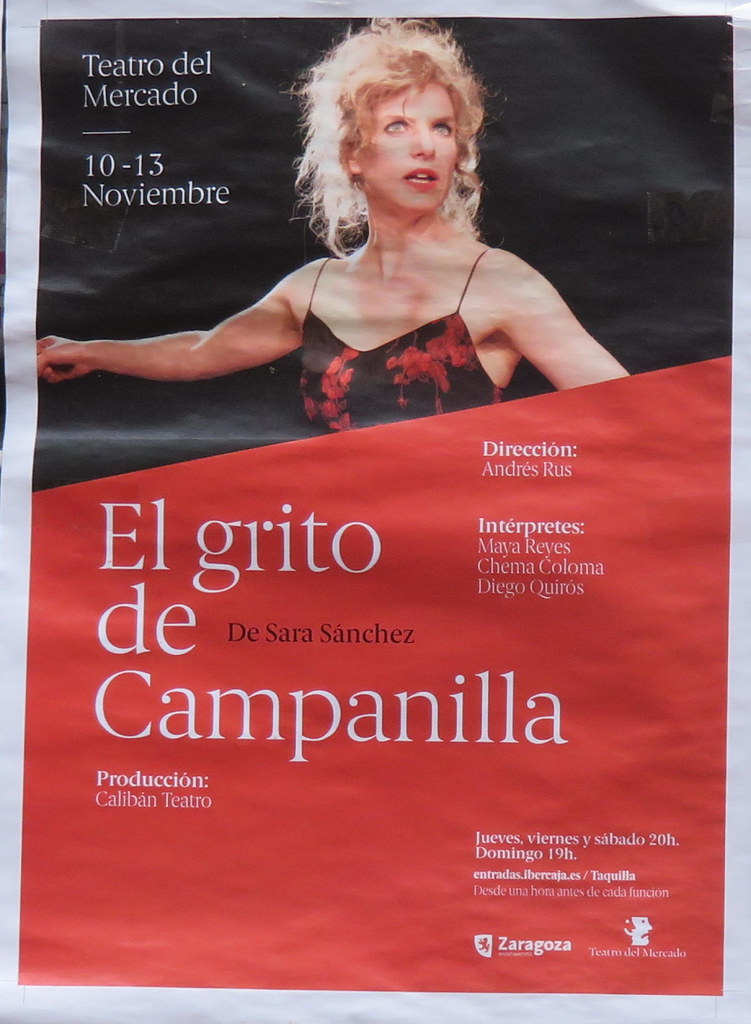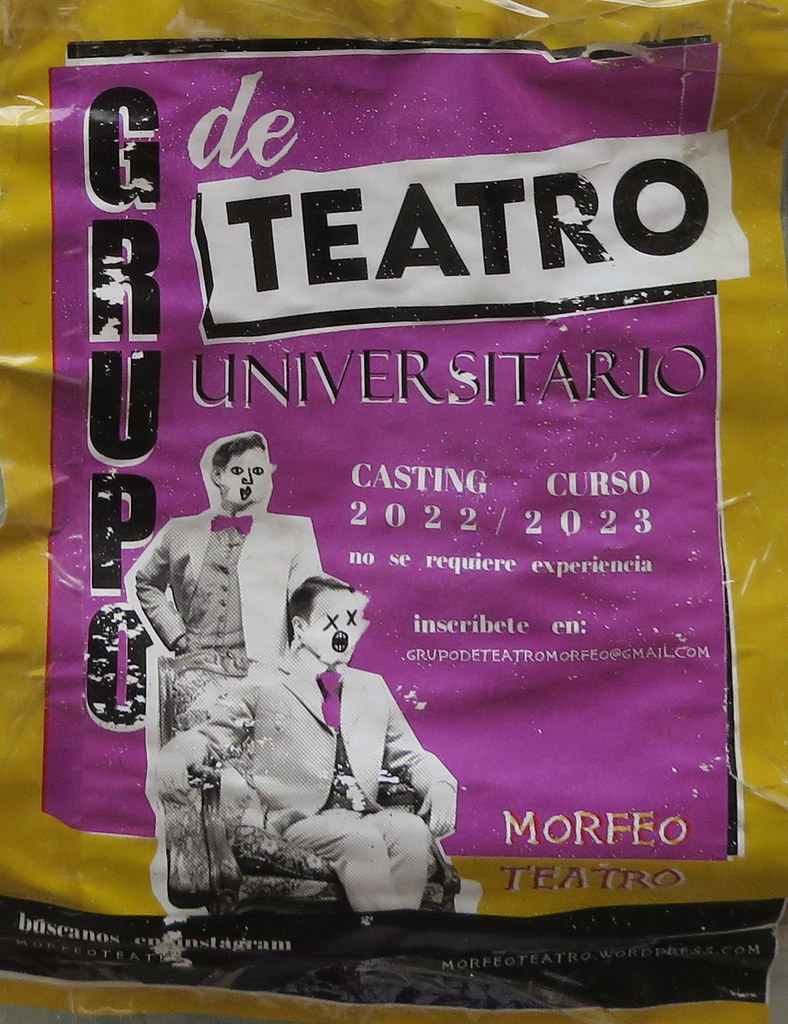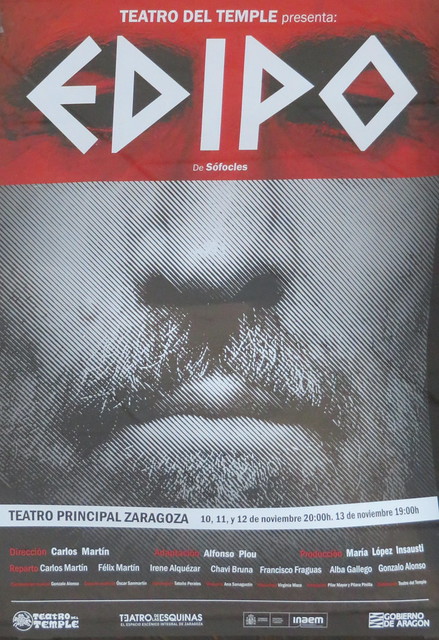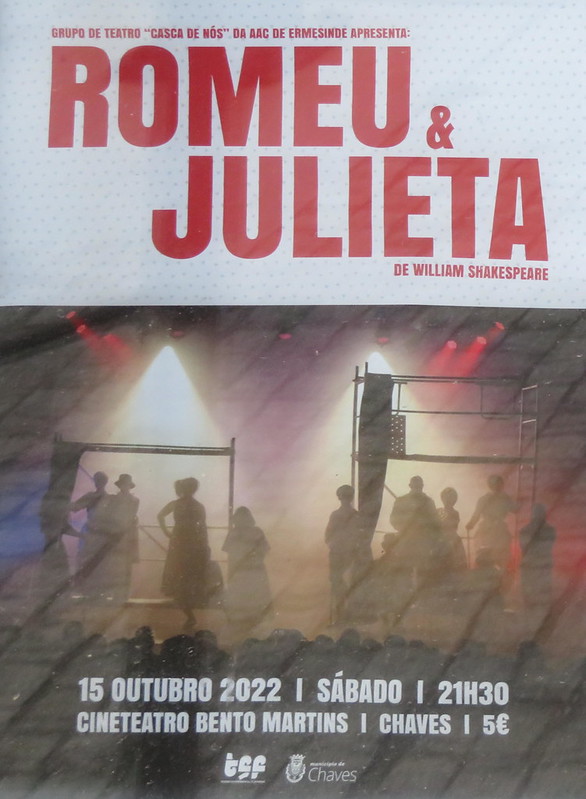miércoles, 28 de junio de 2023
martes, 27 de junio de 2023
La evolución del dividuo social
Este artículo introduce el concepto de 'dividuo', basado en el enfoque interaccionista simbólico sobre la identidad social. La identidad personal y social, y la subjetividad, se constituyen como resultado de los roles sociales y comunicativos. Relacionamos los marcos que estructuran la realidad social según el análisis de Goffman con las posibilidades y modos de interacción social convencionalizados que posibilitan, y con las tecnologías de la comunicación que los posibilitan a ellos. La teoría de los marcos sirve así de base a una semiótica interaccional de los géneros literarios y de los roles textuales (por ej. la autoría, el lector implícito, etc.). La Red y las tecnologías de la información y de la comunicación están llevando las estructuras de auto-interacción del individuo, junto con las estructuras interaccionales entre individuos, a nuevos niveles de complejidad.
Una conferencia que di el año pasado, en un seminario sobre "Individuo y espacio público", en la Universidad de Zaragoza. Reescrita para los repositorios.
Texto completo:
La evolución del dividuo social y de los espacios públicos
http://dx.doi.org/10.2139/ssrn.2377963
English abstract:
The Evolution of the Social Dividual and of Public Spaces
This paper introduces the concept of the dividual, based on the symbolic interactionist approach to social identity. Personal and social identity — and subjectivity — are constitued as a result of the internalization of social and communicative roles. Frames structuring social reality according to Goffman's analysis are related to the conventionalized possibilities and modes of social interaction they enable, and to the technologies of communication which enable them. An interactional semiotics of literary genres and textual roles (e.g. authorship, the implied reader, etc.) is thus grounded on frame theory. The Web and the information and communication technologies of the electronic age are taking the (in)dividual's self-interactional structures, together with the interactional structures between individuals, to new levels of complexity.
Note: Downloadable document is in Spanish.
Keywords: ICT, Communication, Symbolic Interactionism, Subject, Self, Frames, Frame theory, Social psychology, Semiotics, Implied author, Dramatism, World as stage, Theatricality, Roles, Identity, Face
Suggested Citation:
_____. "La evolución del dividuo social y de los espacios públicos." Lecture at the HERAF seminar, Facultad de Filosofía y Letras, Zaragoza, 10 jan. 2014.
_____. "La evolución del dividuo social y de los espacios públicos (The Evolution of the Social Dividual and of Public Spaces)." Social Science Research Network 12 Jan. 2014.*
DOI: 10.2139/ssrn.2377963
http://ssrn.com/abstract=2377963
2014
Psychological Anthropology eJournal 12 Jan. 2014.*
http://www.ssrn.com/link/Psychological-Anthropology.html
2014
Cross-Cultural Studies eJournal 12 Jan. 2014.*
http://www.ssrn.com/link/Cross-Cultural-Studies.html
2014
Cultural Anthropology eJournal 12 Jan. 2014.*
http://www.ssrn.com/link/Cultural-Anthropology.html
2014
Cognition & Culture … eJournal 6.4 (22 Jan. 2014).*
http://www.ssrn.com/link/Cognition-Culture.html (12 Jan. 2014)
2014
Cognitive Social Science eJournal 6.8 (22 Jan. 2014).*
http://www.ssrn.com/link/Cognitive-Social-Science.html (12 Jan. 2014)
2014
Philosophy of Action eJournal 7.1 (23 Jan. 2014).*
http://www.ssrn.com/link/Philosophy-Action.html (12 Jan. 2014)
2014
Metaphysics eJournal 7.5 (29 Jan. 2014)
http://www.ssrn.com/link/Metaphysics.html (12 Jan. 2014)
2014
Philosophy of Mind eJournal 7.2 (24 Jan. 2014).*
http://www.ssrn.com/link/Philosophy-Mind.html (12 Jan. 2014)
2014
_____. "La evolución del dividuo social y de los espacios públicos." Academia 5 Oct. 2014.*
https://www.academia.edu/8637776/
2014
https://www.academia.edu/86981466/
2022
_____. "La evolución del dividuo social y de los espacios públicos." ResearchGate 5 Oct. 2014.*
https://www.researchgate.net/publication/266393290
DOI: 10.13140/2.1.5095.2961
2014
_____. "La evolución del dividuo social y de los espacios públicos." Scribd (shantydiaz) 13 Feb. 2015.*
https://es.scribd.com/doc/255660233/
2015
_____. "La evolución del dividuo social y de los espacios públicos." In García Landa, Vanity Fea 14 Feb. 2015.*
http://vanityfea.blogspot.com.es/2015/02/la-evolucion-del-dividuo-social-y-de.html
2015
_____. "La evolución del dividuo social y de los espacios públicos." Net Sight de José Angel García Landa 4 Jan. 2023.*
https://personal.unizar.es/garciala/publicaciones/dividuo.pdf
2023
Estuvo un tiempo en Scribd:
García Landa, J - La Evolución Del Dividuo Social y de Los Espacios Públicos (2014) by shantydiaz
lunes, 26 de junio de 2023
viernes, 23 de junio de 2023
martes, 20 de junio de 2023
domingo, 18 de junio de 2023
sábado, 17 de junio de 2023
Por qué creemos en bulos
Un artículo por bulerías:
Pascual del Riquelme Martínez, María Isabel. "¿Por qué creemos en bulos?" The Conversation 15 April 2020.*
https://theconversation.com/por-que-creemos-en-bulos-136153
2023
Mi comentario:
También está el problema de que muchos bulos tienen una parte de verdad (que es la que importa en determinados contextos) y que, por otra parte, muchas veces está sujeto a debate lo que es y lo que no es un bulo—precisamente, no vienen con etiqueta de bulo garantizado. Bueno, algunos sí, pero aun así…. Un ejemplo práctico de “conspiranoia” en la que la parte de bulo bien puede ser menos importante que la parte de información: “Alcyon Pléyades Extra 43: Mockingbird, Control social medios CIA-OMS-ONU Tavistock, Blackrock, Soros.” https://www.bitchute.com/video/g9wV35VjfXaV/
Wilson, Rhoda. "Chemtrails Are Not a Theory, They Are a Conspiracy Fact." The Exposé 24 May 2023.*
https://expose-news.com/2023/05/24/chemtrails-are-not-a-theory-they-are-a-conspiracy-fact/
2023
Hay que tener en cuenta, por otra parte, que la "versión oficial" de muchos temas controvertidos (pongamos el asesinato de Kennedy, el atentado de las Torres Gemelas, el del 11-M, el origen del coronavirus, la eficacia de las vacunas covid o de las mascarillas) es sólo un bulo aceptado como verdad, con lo cual en muchos casos (no en todos, claro, pero sí en muchos de los más dudosos) la versión políticamente correcta u oficialmente promovida es un bulo más, sólo que tiene más aceptación o recibe menos críticas.
Con
lo cual no sabe uno si es peor, generalmente hablando o caso por caso,
la conspiranoia de desconfiar de las versiones autorizadas por las
Autoridades, o el borreguismo de dar por bueno lo que te cuentan los
"Expertos" oficialmente favorecidos.
—oOo—
"Por qué creemos en bulos." https://vanityfea.blogspot.com/2023/05/por-que-creemos-en-bulos.html
Glass Prospective: La televisión medieval en el teatro isabelino https://personal.unizar.es/garciala/publicaciones/glassprospective.pdf
El registro completo de las operaciones mentales
Retropost, 2013:
Mendilow (Time and the Novel, p. 114) cita esta especulación de Stendhal:
written 1804, ed. Le Divan, 1931,
vol. 2, pp. 179-180).
Para Mendilow, esta noción supone una anticipación interesante de los desarrollos de la novela moderna, la corriente de conciencia y el monólogo interior, los cuales describe así:
One explanation of the vividness that this technique is capable of achieving lies in the effect of presentness produced by the fact that such wirting is in the present tense; it gains thereby in immediacy what it loses for most readers by its use of private and esoteric forms of expression, associations and symbols which hinder easy identification with the protagonist. (Time and the Novel 112-13).
Sobre Joyce como observador de la mente, puede verse este ensayo de John Horgan, "A Bloomsday Appreciation of Ulysses by James Joyce, Greatest Mind Scientist Ever."
"Joyce
was not a theorist of mind but he was an exceptional observer of it,
far more so than any scientist. He helped us become more aware of our
awareness."
Mendilow,
al contrario que Stendhal, no cree en la posibilidad de un registro
completo de los procesos mentales o emocionales. Escribiendo en 1952,
después de Hartmann y después de Freud, ya sabe que la consciencia es
sólo la punta del iceberg de los procesos inconscientes de la mente. Los
novelistas imitan con su transcripción verbal no el conjunto de los
procesos mentales, sino sólo de los procesos de atención consciente—la
atención es enormemente potenciada por el lenguaje—y en menor medida los
elementos preconscientes o subliminales,
Aquí hay una charla de
Daniel Dennett sobre la consciencia, en la que propone lo que llama su
"teoría de la consciencia como fama":
(Vaya, cambio el vídeo desaparecido por otro posterior en el que menciona su teoría)...
Quizá se podría llamar más adecuadamente la teoría de la consciencia como retrospección reflexiva. La cuestión es que la consciencia reflexiva de algo, así podríamos traducir awareness en
el sentido más fuerte, cuando no es mera percepción consciente, sino
atención a esa reflexión consciente—esa consciencia reflexiva, dice
Dennett, es algo que se crea mediante una retroalimentación o lazo
retroactivo. El tiempo consciente es de esta manera totalmente diferente
del tiempo de la percepción subliminal, y lleva siempre un ligero
desfase.
El fenómeno consciente por tanto se crea en una especie
de tiempo gobernado por el círculo hermenéutico, y se genera como
fenómeno antes de llegar a ser consciente; sólo por esa
retroalimentación y permanencia, lo que Dennett llama la "fama" de la
consciencia, llega a ocupar un lugar prominente en la atención, o más
bien a generar esa atención consciente como tal. Una analogía que usa
Dennett es la de la especiación. Hay también una relación algo
paradójica entre especiación y retrospección—es un tema del que yo he
escrito alguna cosa, por ejemplo en este artículo sobre el evolucionismo de Darwin y de Gustavo Bueno—con
razonamientos algo parecidos a los de Dennett. En fin, que el momento
de especiación se genera retroactivamente, como toda una serie de
fenómenos históricos e interpretativos que siguen esta curiosa
temporalidad gobernada por la retrospección. Ver más sobre esta
retroactividad aquí ("En el retrovisor").
Otra
de las cosas interesantes que dice Dennett es que no hay una frontera
clara entre lo consciente y lo preconsciente o inconsciente. La
consciencia es un fenómeno emergente, que vivimos "en primera persona",
de modo particular en la experiencia subjetiva de las diversas
modalidades de atención. Pero al descomponerla, lo que encontramos no
es, precisamente, consciencia, sino sólo las señales que, organizadas
del modo esencialmente narrativo y retrospectivo que describe Dennett,
dan lugar a la experiencia consciente.
Por eso es por lo que los
novelistas no pueden representar la consciencia como tal, sino sólo una
especie de simulación o ficcionalización de la misma. Ya comenzando por
el hecho mismo de que en la narrativa psicológica, la percepción se
verbaliza—en el cine puede darse una aproximación más cercana, con una
mezcla de imágenes visuales perceptuales y memorísticas, y pensamiento
verbalizado o parcialmente verbalizado. Aunque es un experimento más
bien infrecuente, a no ser en pasajes breves de sueños o de inmersión
momentánea en la mente de un personaje.
Sea como sea, tanto el cine como la ficción son, como dice Horgan del Ulises de
Joyce, un ejercicio de atención reflexiva sobre la consciencia, que la
convierte en una especie de hiperconciencia. Al igual que el lenguaje
estructura el pensamiento y potencia la atención, la representación
experimental de los procesos de consciencia es de por sí una experiencia
única para la consciencia. La novela psicológica, o el cine
psicológico, abren los ojos a la atención sobre nuestra experiencia de
vivir como una consciencia en flujo y una atención variable que pasa
como un proyector luminoso de un aspecto a otro del paisaje barroco
interior, y del exterior, resaltándolos y llevándonos al siguiente
momento de ese tiempo interior construido casi como un telefilm
producido, dirigido y emitido en directo.
viernes, 16 de junio de 2023
martes, 13 de junio de 2023
Somos teatreros
Somos teatreros: El sujeto, la interacción dialéctica y la estrategia de la representación según Goffman: https://www.academia.edu/1603731/
domingo, 11 de junio de 2023
"It's All Just Acting"
Una cámara oculta pilla a la Directora de una ONG enseñando a los inmigrantes a hacerse pasar por cristianos perseguidos.https://t.co/BAiMwPxq2t
— Sheldon (@numer344) June 10, 2023
sábado, 10 de junio de 2023
Lear on the 2nd Floor
Retropost, 2013:
Lear on the 2nd Floor— recién estrenada. Una ópera neurocognitiva de Anthony Davis, con libreto de Allan Havis inspirado (lejanamente) en King Lear. Y en la enfermedad de Alzheimer.
viernes, 9 de junio de 2023
miércoles, 7 de junio de 2023
Actuaciones
Actuaciones: Notas sobre el primer capítulo de 'The Presentation of Self in Everyday Life' de Erving Goffman: https://www.academia.edu/40686339/
martes, 6 de junio de 2023
Plandemic 3: The Great Awakening
Plandemic 3: The Great Awakening. Dir. Mikki Willis. Odysee (World Truth Seekers) 4 June 2023.* (Fauci, Trudeau, Schwab, WEF, Communism, Globalism, Chinese tyranny, Covidianism, Subversion, Property, Families, Individualism, Resistance).
https://odysee.com/@WorldTruthSeekers:6/Plandemic3:c
2023
El drama: Forma y acción, no mensaje
Retropost, 2013:
Un pasaje de J. L. Styan, The Elements of Drama, contra la idea de un teatro "de ideas" o "realista", y defendiendo el mostrar sobre el decir, y las convenciones, la estilización, la construcción de una forma dramática autosustentada:
By the laws of comic theatre and of any comic art, perhaps the more incisevely and vigorously the writer wishes to probe, the farther into a Ruritania must he transport the spectator first.
So a first step towards judgment is not to ask how far it is like life, but why it is different from life. But in asking 'why?', we come close to looking for theat tiresome, misleading, ungainly phantom, the play's 'message'. The common assumption that the more the playwright teaches a tidy lesson, the more considerable it is, is a dangerous fallacy. Though we may consciously disavow it, it is an assumption we hold unwittingly. Drama does not tell what it has to say, but shows it. The good mother does not say to her child, 'Go away and play'; she says specifically, 'See if you can find the cotton-reel in my basket'. The playwright owes to his audience to find particular and concret action for the general and abstract idea, so that the playgoer can move across common ground with him. Because the stage expects concrete detail of behaviour for its living actors, no other literary form is more objective, less moralizing. (...)
Without losing one's sense of the complexity of the whole, the discssion must become one about the ordering and emphasis of the play and the relation of its parts, not immediately about its content or message. Injustice has been done to the work of Bernard Shaw, though he invited it himself, by a general refusal to give him credit as an artist before assessing hims as a thinker. This is somewhat true of Molière, is still largely true of Strindberg and Pirandello, for years was true of Shakespeare, and may yet blight the fortunes of M. Anouilh today. Shaw's own attitude to Ibsen, as seen in The Quintessence of Ibsenism, showed a similar error of judgment. Should the spectator become aware of the preacher in the playwright, aware that a view of life is being thrust upon him, the play will destroy itself.
A
poem can make a deep and broad meaning out of a tiny subject, and what
is true of poetry is true of drama. The meaning that matters emerges
from the way the subject is treated. the family of The Cherry Orchard makes a departure, the family of The Three Sisters does
not, but there the seminal ideas end: the rest is growth and fruition.
The satisfaction of drama arises from no logical consistency in the
events, nor from their magnitude. The power of the play comes of its
consistency within itself, and its content achieves magnitude by the
quality of its exploration, its with of view and its sense of
proportion.
In
arriving at a judgment, the second step is therefore one inseparable
from our decision about the quality of the texture and the offering of
the impressions, together with decisions about the delicacy and
precision by which the author and his agents originate and project them.
(1960: 262-3)
lunes, 5 de junio de 2023
sábado, 3 de junio de 2023
-
La teoría de la acción característica en el drama la expondría con mucho acierto A. C. Bradley con respecto a las tragedias de Shakespea...
-
Freud ante la esfinge: Profecías autocumplidas, interpretaciones autointerpretables https://www.academia.edu/63138559/
-
Retropost, 2014: From The Oxford Companion to English Literature, ed. Margaret Drabble: Much Ado about Nothing, a comedy by *Shakes...
